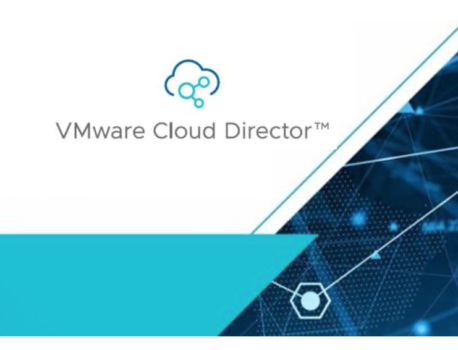Hi everyone! Yesterday VMware announced the release of VMware Cloud Director 10.3, including the following:
- Kubernetes with VMware Cloud Director
- Tanzu Kubernetes clusters support for NSX-T Data Center group networking. Tanzu Kubernetes clusters are by default only reachable from IP subnets of networks within the same organization virtual data center in which a cluster is created. You can manually configure external access to specific services in a Tanzu Kubernetes cluster. If a Kubernetes cluster is hosted in a VDC that is part of an NSX-T data center group, you can permit access to the cluster’s control plane and to published Kubernetes services from workloads within that data center group.
- Service providers and tenants can upgrade native and Tanzu Kubernetes clusters by using the VMware Cloud Director UI
- Service providers can use vRealize Operations Tenant App to chargeback Kubernetes
- Tenants can use a public single API endpoint for all LCM of both Tanzu Kubernetes Grid Service, Tanzu Kubernetes Grid, and upstream Kubernetes clusters
- VMware Cloud Director appliance management UI improvements for turning on and off FIPS-compliant mode
- API support for moving vApps across vCenter Server instances
- Catalog management UI improvements
- VMware Cloud Director Service Library support for vRealize Orchestrator 8.x
- The Service Library items in VMware Cloud Director are vRealize Orchestrator workflows that expand the cloud management capabilities and make it possible for system administrators and organization administrators to monitor and manipulate different services. If you are using vRealize Orchestrator 7.x, your current functionality and workflows continue to work as expected.
- VMware Cloud Director 10.3 ships with a vRealize Orchestrator plug-in that you can use to render vRealize Orchestrator workflows that are published to tenants. You must publish the plug-in to all tenants that you want to run Service Library Workflows based on vRealize Orchestrator.
- Streamlined Quick Search and Global Search UI
- Customizable Keyboard Shortcuts
- Improvements in the performance of Auto Scaling extension
- Networking Features
- vApp network services in organization VDCs backed by NSX-T Data Center. You can use NAT, firewall, and static routing in vApp networks.
- Distributed Firewall Dynamic Group Membership with NSX-T Data Center Networking. You can create security groups of VMs with a dynamic membership that is based on VM characteristics, such as VM names and VM tags. You use dynamic groups to create distributed firewall rules and edge gateway firewall rules that are applied on a per-VM basis in a data center group networking context. By using dynamic security groups in distributed firewall rules, you can micro-segment network traffic and effectively secure the workloads in your organization.
- Service providers can create external networks backed by VLAN and overlay NSX-T Data Center segments
- Service providers can import networks backed by vSphere DVPGs. System administrators can create organization virtual data center networks by importing a distributed port group from a vSphere distributed switch. Imported DVPG networks can be shared across data center groups.
- VLAN and port-group network pools for VDCs backed by NSX-T Data Center
- Support for provider VDC creation without associating it with NSX Data Center for vSphere or NSX-T Data Center Update port groups of external networks
- Avi 20.1.3 and 20.1.4 support
- Networking UI Enhancements
- UI support for assigning a primary IP address to an NSX-T edge gateway
- UI support for DHCPv6 and SLAAC configuration
- Support for IPv6 static pools creation and management
- VDC group network list view in the UI
- Improved Edge Cluster assignment in organization VDCs
- Added support for DHCP management for isolated networks in organization VDCs backed by NSX-T Data Center
- Service providers can edit Avi SEG general details
- New Tier-0 Gateway Networking UI Section in the Service Provider Portal
- Networking General Enhancements
- Allocated DHCP IP addresses are visible on VM details screen
- You can edit and remove DHCP pools from networks backed by NSX-T Data Center
- Reject action for NSX-T Data Center edge gateway firewall rules. When creating a firewall rule on an NSX-T Data Center edge gateway, you can choose to block traffic from specific sources and notify the blocked client that traffic was rejected.
- You can change the priority of NAT rules
- Reflexive NAT support
- VMware Cloud on AWS support for imported networks
- Advertise services for internal subnets with route advertisement
- Support for /32 subnets on external networks backed by NSX-T Data Center
- Guest VLAN Tagging for networks backed by NSX-T Data Center segments
- Alpha API availability. The Alpha APIs are enabled by default.System administrators can activate and deactivate VMware Cloud Director Alpha APIs by using the VMware Cloud Director API or by turning Alpha Features on or off in the VMware Cloud Director UI. The following functionalities are available when Alpha APIs are active:
- Kubernetes Container Clusters. When Alpha API support is active, you can provision Tanzu Kubernetes Grid Service clusters in addition to native clusters.
- Legacy API Login. When you specify API version 37.0.0-alpha in your request, the legacy API login endpoints are unavailable. The removal of the /api/sessions API login endpoint is due in the next major VMware Cloud Director release (VMware Cloud Director API version 37.0).
- Please note that the recently released Terraform Provider for VMware Cloud Director 3.3 supports VMware Cloud Director 10.3.
- The cell management tool supports generation and configuration of private keys and certificates only in PEM format. The support of keystore files is deprecated.
Closing Notes
I hope it has been useful. For more information about the new and updated features of this release, see What’s New in VMware Cloud Director 10.3. See you next!


